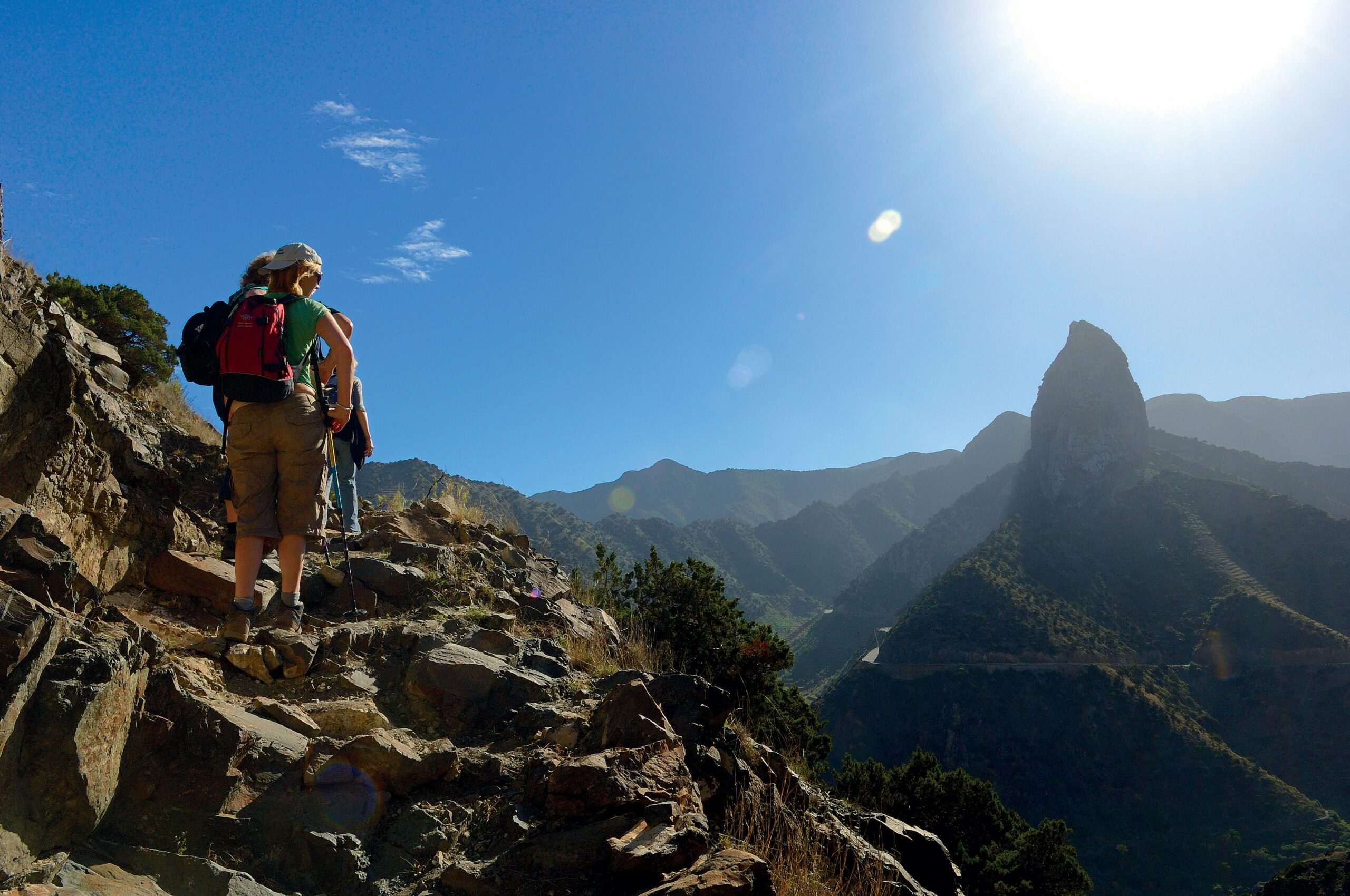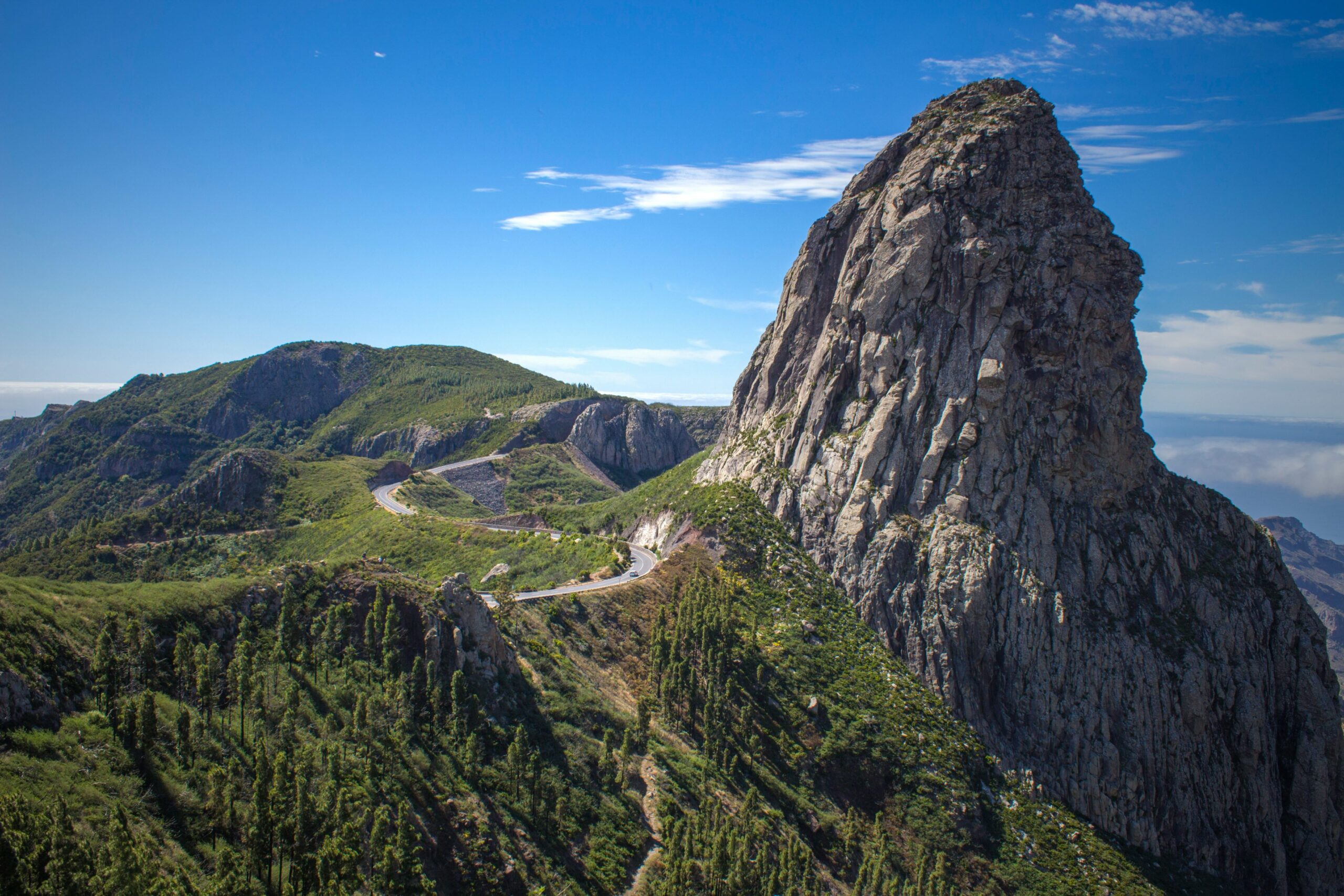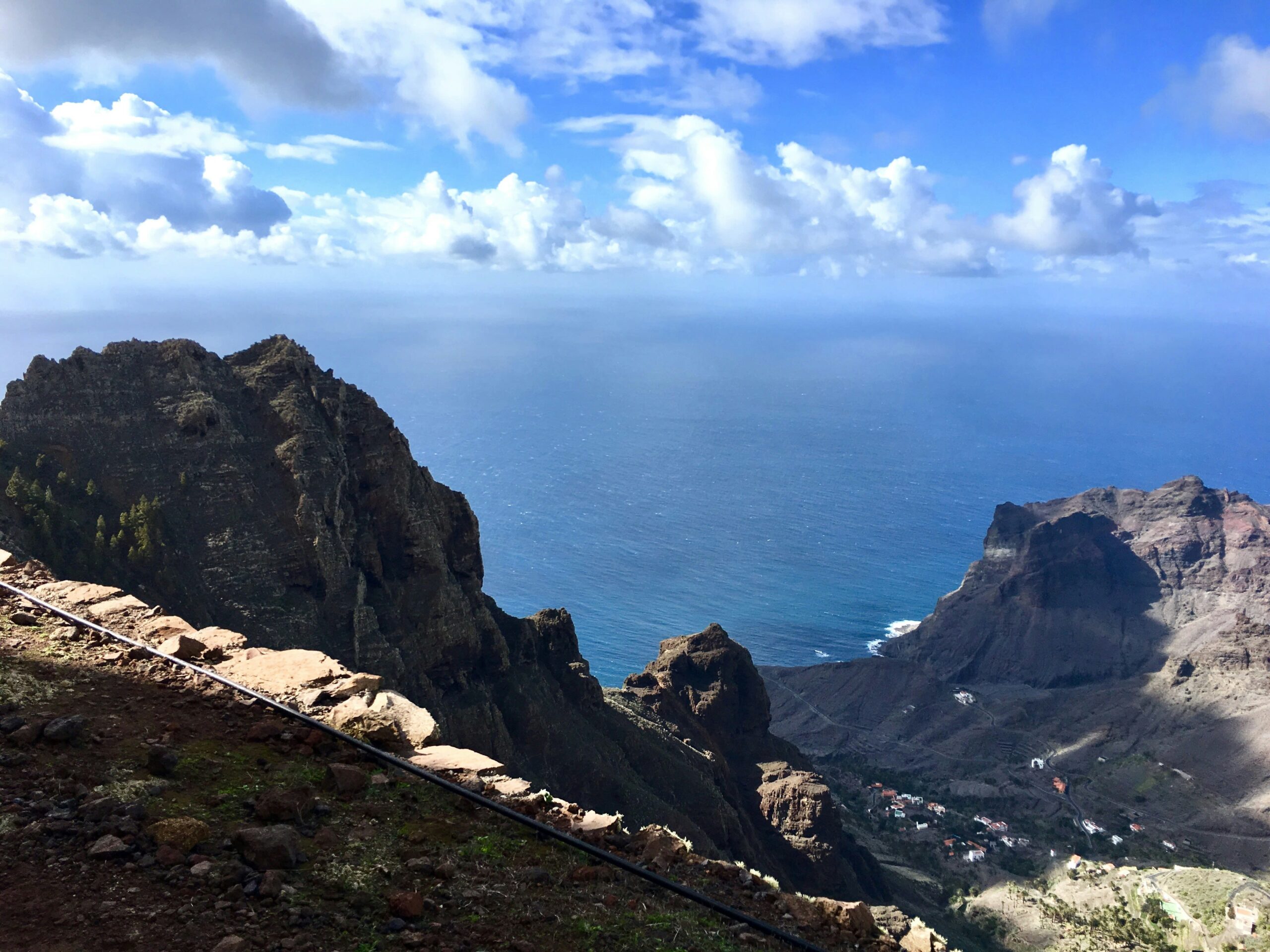Choose your own adventure on La Gomera
Scroll down to learn more
Words by Ross Clarke
Though one of the smaller Canary Islands, and often overlooked by sun seekers in favour of its larger and better-known siblings, La Gomera is no retiring wallflower. On the contrary: this rugged isle, lying some 30km west of Tenerife, lures active travellers seeking outdoor adventures away from the crowds. La Gomera boasts dense, ancient forests, dramatic volcanic landscapes and a storied history, having been Christopher Columbus’ last port of call before heading west on his first transatlantic expedition. No wonder its younger people, many of whom had been leaving the island to find jobs elsewhere, are now staying or returning to showcase La Gomera to active visitors keen to experience its great outdoors.
Photo by Claudia Mañas
Hike the trails
With over 600km of routes, ranging from beginner friendly paths to challenging hikes, La Gomera is a tempting destination for anyone aiming to lace up those walking boots. The best-known trails lace Garajonay National Park, which stretches across the island’s mountainous centre.
Here you’ll find precious surviving swathes of often misty laurisilva forest – living fossils of the lush rainforests that once covered much of Europe. Further north, a popular 12km circular walk around Vallehermoso delves into juniper groves and among a range of other plant species; watch for birds such as buzzards soaring overhead.

Pedal peaceful roads
La Gomera is a favourite with cyclists of all levels; indeed, many top athletes come here to train. Road cycling is popular, not least because the routes on La Gomera are never too busy with traffic.
For beginners and those less confident about cycling solo, local companies such as Gomera Cycling & Walking offer guided excursions. This family-run outfit leads various small-group tours – both on and off road – that can be adapted to suit different experience levels, as well as providing bike hire and sales. For a gentle guided road circuit, try the Southern Villages tour, a 45km loop rated ‘Easy’.

Photo by Tara Vester
Photo by Eugen Sacalî
Dive thriving seas
The waters around La Gomera are warm and clear, with visibility typically around 30m, so scuba diving is a delight year round. Spectacular dive sites include Playa de la Cueva, off the island’s easternmost tip, and Los Órganos, beneath those namesake basalt ‘organ pipes’ on the sea cliffs of the north coast, where you might spy whales, dolphins, rays and schools of barracuda.
On any dive, it’s common to spot creatures including parrotfish, moray eels, lobsters and sea turtles. Book with a local outfit such as Splash Gomera to ensure your dive is both safe and sustainable.
Kayak the coast
To admire dramatic cliffs and appreciate the island from a different perspective, rent kayaks to explore at sea level. La Gomera’s many sheltered bays range around the coast and ensure calm waters, so it’s an ideal family activity; favourite spots for beginners include Playa de Santiago, where Splash Gomera hires out kayaks and paddleboards.
The waters around La Gomera are bustling with loggerhead turtles, bottlenose dolphins and various whales – in fact, 23 of the world’s 90 or so cetacean species have been sighted in the strait between Tenerife and La Gomera, Europe’s first Whale Heritage Site
Scramble and leap the cliffs
Rock-climbing opportunities are mainly suitable for experienced enthusiasts. The most famous site is Roque Cano; climbing here requires permission from La Gomera government, in an effort to preserve the rock for future generations.
Instead, why not try the Canarian pastime of leaping? The tradition of salto del pastor (shepherd’s leap) – a little like pole-vaulting using a long wooden asta or staff – was possibly developed by the islands’ pre-Hispanic Guanche inhabitants as a technique for crossing ravines. Try it yourself and help preserve this ancient activity.

Photo by Julia Elliot
Photo by Reiseuhu
Need to know
Getting there
Photo by Johannes Óvegur
Getting there
Photo by Tara Vester

Photo by Marek Piwnicki
Photo by Julia Elliot
Glossary
Sustainability
The quality of being able to continue over a period of time, or the avoidance of the depletion of natural resources in order to maintain an ecological balance (Camrbdige Dictionary).


